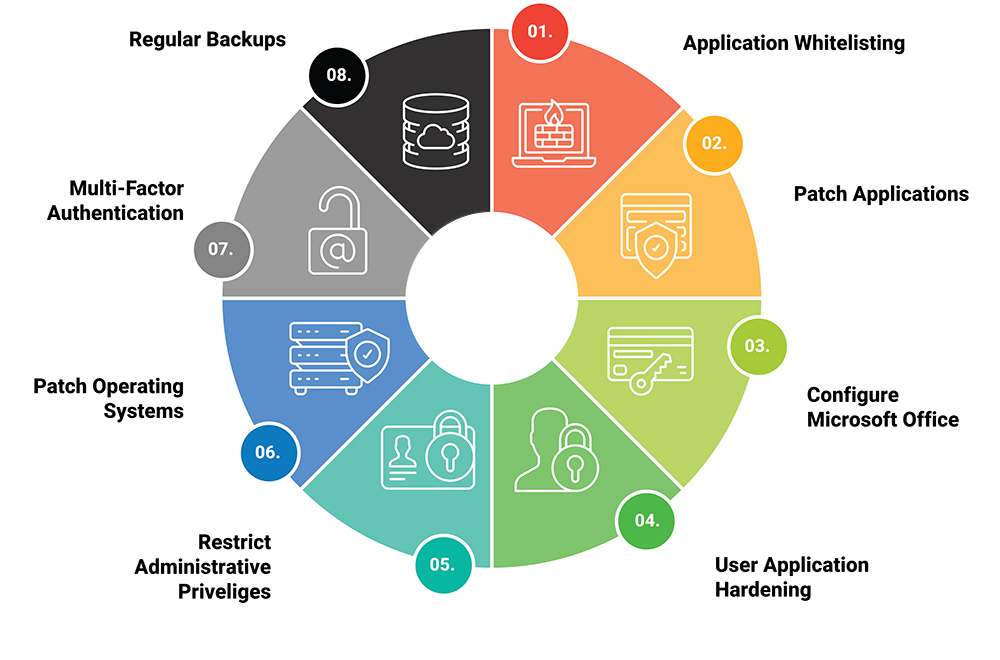In the continually evolving world of cyber threats, password security is your business’s first line of defence. As we approach 2025, the National Institute of Standards and Technology (NIST) password guidelines haveonce again been refreshed to address new attack vectors, human factors, and regulatory demands. For Australian organisations navigating compliance requirements and an increasingly sophisticated cyber threatlandscape, understanding these guidelines is paramount. This blog will clarify what’s changed for 2025, dispel persistent myths about password policies, and explain exactly what the NIST 800-53 and 800-171requirements mean for your business – ensuring you’re ready to mitigate password-related risks confidently.
Why NIST Guidelines Matter to Australian Businesses
NIST sets the global standard for password management. Although developed in the United States, its frameworks are widely adopted worldwide, including by Australian businesses seeking to improve their securityposture or meet contractual obligations. Whether you manage sensitive data, provide critical services, or simply want to build robust cyber defences, adopting NIST’s recommendations can help you reduce risk, prove duediligence, and align with other frameworks such as Essential 8 and ISO 27001.
What Are the NIST Guidelines for Passwords?
NIST’s guidelines are outlined in special publications, most notably SP 800-63B, SP 800-53, and SP 800-171. Rather than recommending complex, arbitrary rules that users can’t remember, NIST has shifted focus topractical, evidence-based controls that actually reduce risk.
Key takeaways from the latest NIST guidance include:
- Passwords should be at least 8 characters long (with recommendations for longer passphrases when possible).
- Forget complexity requirements (e.g. mandatory symbols, uppercase letters) that encourage predictable behaviour.
- No periodic password expiration purely for its own sake – unless there’s evidence of compromise.
- Screen new passwords against lists of commonly used or compromised credentials.
- Support user-friendly options, such as password managers and paste functionality.
- Encourage or require multi-factor authentication (MFA) wherever practical.
These principles remove unnecessary friction for users while addressing real-world attack vectors such as brute-force and credential stuffing.
NIST 800-53: Password Requirements Explained
NIST SP 800-53 provides a comprehensive framework of security controls for information systems. In relation to authentication and password policy, the requirements emphasise both security and usability.
Specifically, NIST 800-53 directs organisations to:
- Enforce a minimum password length of at least 8 characters.
- Vet new credentials against known breaches — using threat intelligence to block compromised or commonly used passwords.
- Protect passwords during storage and transmission with suitable cryptographic methods.
- Avoid mandatory periodic changes unless there’s reason to believe the password has been compromised.
- Discourage the use of password hints or knowledge-based authentication that can be easily guessed.
It also encourages technical controls such as account lockout after repeated failed attempts, and support for alternative authenticators such as biometrics. These measures significantly diminish the risk of unauthorised access due to poor password hygiene or predictable attack patterns.
What’s New in NIST 2025 Password Requirements?
For 2025, the emphasis on phishing-resistant authentication and minimising user burden continues to grow. Here’s what’s important for your organisation to address:
- Passwords must still be at least 8 characters but longer is encouraged; passphrases are preferable for higher security zones.
- Passwords chosen by users need to be checked against updated lists of breached or weak credentials, ideally in real time.
- Strictly avoid periodic password resets unless triggered by evidence of compromise—reducing password fatigue and risky workarounds.
- MFA is strongly recommended and, in many scenarios, expected.
- Continued support for users with disabilities (such as not restricting the use of paste functions or password managers).
These updates reflect the latest research around human behaviour, attack trends, and usability, aiming to help you balance security, compliance, and a positive user experience.
NIST 800-171: Password Guidelines for Controlled Data
If your organisation handles Controlled Unclassified Information (CUI) — common in defence supply chains and government contracts — NIST 800-171 is relevant to you. Its password requirements are closely aligned with 800-53, including:
- Minimum length of at least 8 characters.
- Protection of passwords in transit and at rest, using strong cryptographic protocols.
- Prompt removal of credentials from user accounts upon role changes or employee departures.
- Preventing reuse of old passwords and encouraging unique, uncompromised credentials.
- Periodic review of authentication policies to ensure alignment with emerging threats and best practices.
These guidelines, especially when combined with robust online security awareness training, empower staff to play an active role in protecting critical assets.
Common Misconceptions About Passwords
Many organisations still operate under outdated password “best practices” that actually undermine security:
- Forcing users to change passwords too frequently can lead to weaker, more predictable credentials.
- Enforcing arbitrary complexity requirements may encourage users to write down passwords or use slight variations.
- Believing password length doesn’t matter—as data demonstrates, longer passphrases are far more secure.
NIST addresses these myths directly, promoting strategies that actually make attacks harder while improving compliance and user satisfaction.
Building a Strong Password Policy: Practical Steps for 2025
To implement NIST-compliant password security:
- Update Your Password Policies: Remove unnecessary complexity and rotation mandates; introduce screening against breach databases.
- Educate Your Team: Share why long, unique passwords and passphrases work best. Reinforce this with regular cyber security awareness training.
- Implement Technical Controls: Leverage MFA, account lockouts, and password managers. Ensure cryptographic protection for credentials.
- Regularly Review Your Practices: Security is not a set-and-forget exercise. Continually reassess your policies to adapt to new threats and requirements.
Why Partner with White Rook Cyber?
Understanding and implementing NIST guidelines is a critical step in strengthening your overall security posture. At White Rook Cyber, our expert team provides tailored support for Australian businesses — from advisory,compliance, and strategy, to hands-on technical solutions.
With a comprehensive suite of cyber security services, we:
- Guide your team through NIST and other regulatory requirements.
- Conduct gap analysis and recommend actionable improvements.
- Deliver engaging online security awareness training to every level of your organisation.
- Offer continuous monitoring and rapid response to evolving cyber threats.
Final Thoughts
NIST’s password guidelines for 2025 advocate smarter, streamlined protection over arbitrary, outdated complexity. By adopting these recommendations, you can lower your risk of breaches, simplify compliance, and fostera more security-conscious workplace. If you need expert guidance on NIST, password policy, or a comprehensive security strategy tailored to your business, trust White Rook Cyber to deliver peace of mind and robustresults. Contact us today and take the next step toward true cyber resilience





